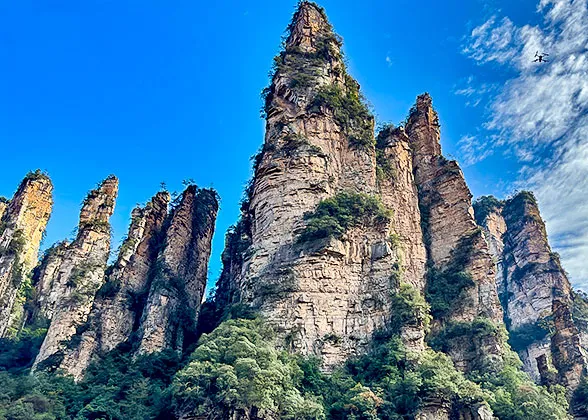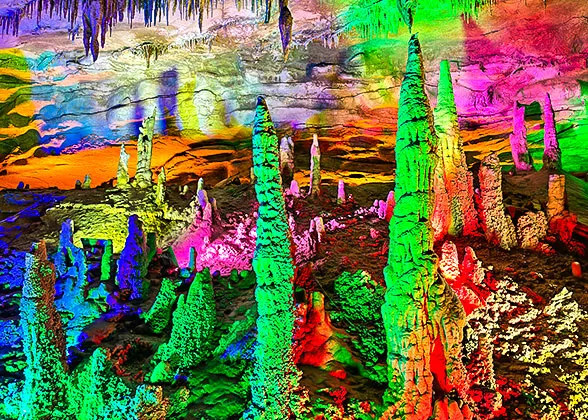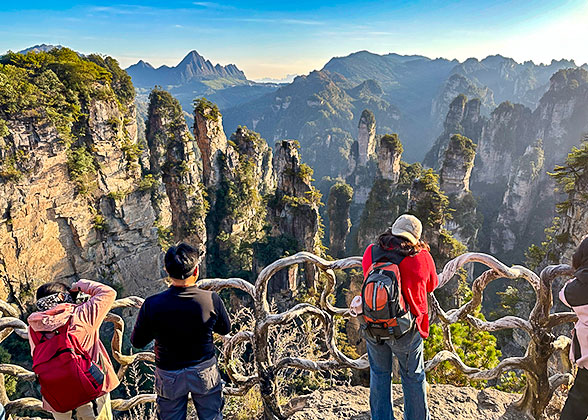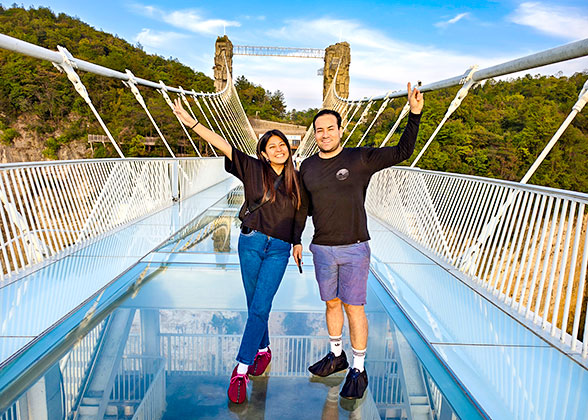
From Nov. 6, 2026 on, the upper section of Tianmen Mountain Grand Cableway has been closed for maintenance until further notice, and the lower section from the mountain foot to middle station still works. The Fast Cableway of Tianmen Mountain and the transmountain escalator will send tourists to the mountain top.
Zhangjiajie, a small city located in south-central China has in recent years been all over social media including Youtube and Instagram with its thousands of towering stone peaks, visitors’ screaming in cliffside sightseeing elevator, Glass Bridge suspended above deep canyon, the world’s longest cable car and more, on a par with the top China travel destinations like Beijing, Xi’an and Shanghai. Among South Koreans, Zhangjiajie even surpasses those “tops” and has become an once-in-a-lifetime destination.
Zhangjiajie Facts
Chinese Name: 张家界 (zhāng jiā jiè)
Population (2024): 1,486,900
Area: 9,653 square kilometers (3,727 square miles)
Administrative Division: 2 districts: Yongding, Wulingyuan; 2 counties: Cili, Sangzhi
Area Code: 0744
Zip Code: 427000
GDP (2024): CNY 65.44 billion (USD 9.1 billion)
Major Ethnic Groups:
Han,
Tujia,
Bai,
Miao Why Should You Come to Zhangjiajie?
1. Picturesque Landscape of Stone Peaks, Karst Caves, Clear Waters…
Different from
Beijing,
Xi'an,
Shanghai and other cities known for numerous historical buildings or modern skyscrapers, Zhangjiajie is more famous for its grandeur natural beauty formed by billions of years of wind and water erosion. Here, you can watch nearly 3,000 stone pillars standing faintly in the white floating mist, some of which look like slender and graceful girls, some like soldiers, some like animals... Meanwhile, you can see caves hung on the mountain or hidden underground, clear lakes, winding streams, dense forests, and monkey groups strolling in the woods. As early as in 1992, Zhangjiajie has been listed as a UNESCO World Natural Heritage for its unique karst landform.
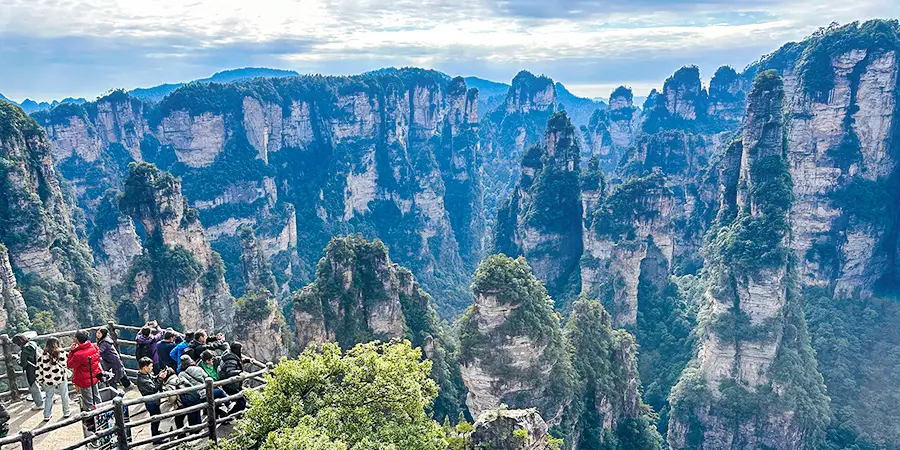 |
| Peak Forests in Zhangjiajie |
2. A Paradise for Adventurous Travelers and Those Pursuing Travel Participation
Zhangjiajie enables travelers to try exciting programs while enjoying the scenery. For example, test your courage on the 300-meter-high (985 feet) transparent glass bridge, climb the almost vertical steel cables built by cliff, and walk 999 staircases that almost exhaust your strength.
Sometimes, the reason why people decide to embark on a journey goes beyond charming scenery, but simply a photo or a movie. The prototype of Avatar's floating mountains, aka
Hallelujah Mountain is right here. For Avatar fans, taking a picture with this mountain is undoubtedly a good way to pay tribute to this movie.
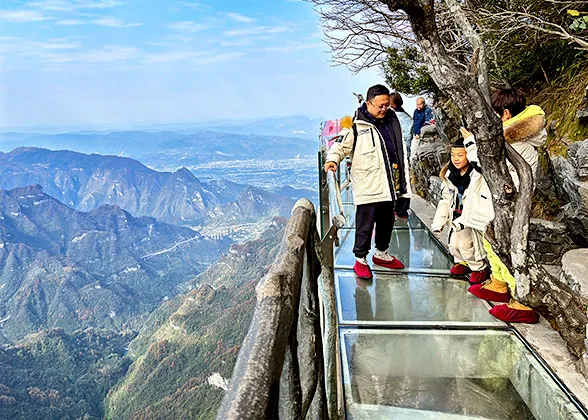 | | Tianmen Mountain Glass Walkway | |  | | Zhangjiajie Grand Canyon Via Ferrata | |
3. Convenient and Friendly Facilities for International Travelers
Traveling in Zhangjiajie, you don't have to worry too much about language barriers, payment methods or other issues. English is not the city's official language, but in many scenic areas, the English signs are everywhere. Moreover, foreign bank cards like MasterCard and VISA are widely accepted here. There are also places for you to change currency.
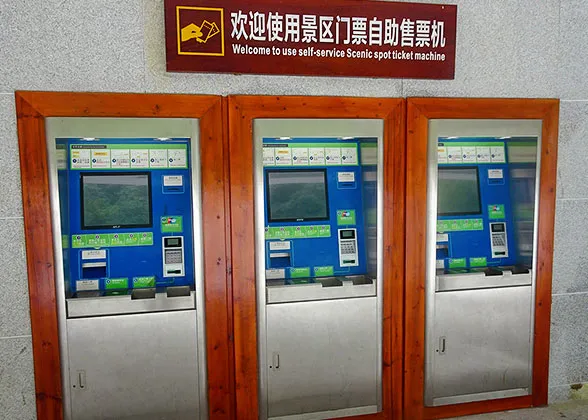 | | Zhangjiajie Forest Park Ticket Machine | |  | | Currency Exchange Window in Zhangjiajie Airport | |
4. Long History and Diverse Culture
Zhangjiajie’s history can be traced back to 10,000 to 4,000 years ago, and it has long been the habitat of Tujia, Bai, Miao three main ethnic minority groups and other 29 minority groups. You can learn their special folk customs through shows like Tianmen Fox Fairy Show and Zhangjiajie Eternal Love, their distinctive folk houses, and spicy yet mouth-watering food. Also, it will be very interesting to take some beautiful photos in traditional costumes of those ethnic groups.
 |
| Tianmen Fox Fairy Show |
As mentioned above, Zhangjiajie is a tourist city that gathers magnificent natural scenery, thrilling programs, and rich ethnic minority culture. To see the beautiful peaks, lakes, and forests, you can go to Zhangjiajie Forest Park, Tianmen Mountain, Yuanjiajie, Yellow Dragon Cave, etc; if you pursue excitement and participation in traveling, then you must go to Glass Bridge, Hallelujah Mountain, and
Seven Star Mountain; if you want to experience ethnic minority culture, then
Furong Ancient Town,
Fenghuang Ancient Town, and
72 Strange Buildings can't be missed.
Zhangjiajie Tour Planning
Zhangjiajie’s major tourist attractions are very large, especially Zhangjiajie National Forest Park. If you decide to come to Zhangjiajie, it is suggested to give it at least 3 days: 1.5 days for the Forest Park, half a day for Zhangjiajie Glass Bridge, half a day for Tianmen Mountain, and another half day for other worthwhile places like 72 Strange Buildings or Seven Star Mountain. If you want an in-depth tour also including the nearby Fenghuang Ancient Town or Furong Town, add another 2 days to your plan.
Further Reading:
How to Plan a 2-Day Zhangjiajie Trip,
How Many Days to Spend in ZhangjiajieBy train or air, you can get to Zhangjiajie directly from most cities in China, including Beijing, Shanghai, Guangzhou, Changsha, Hong Kong, and Chengdu. Some foreign countries also have direct flights to Zhangjiajie, like South Korea, Thailand, Vietnam, Indonesia, and Malaysia. If your place has no direct flights, first fly to Beijing, Shanghai, or Hong Kong and then take a train or plane to Zhangjiajie. If the train tickets to Zhangjiajie are sold out, Changsha is always the best place to transfer. You can arrive in Changsha first and connect to another train to Zhangjiajie.
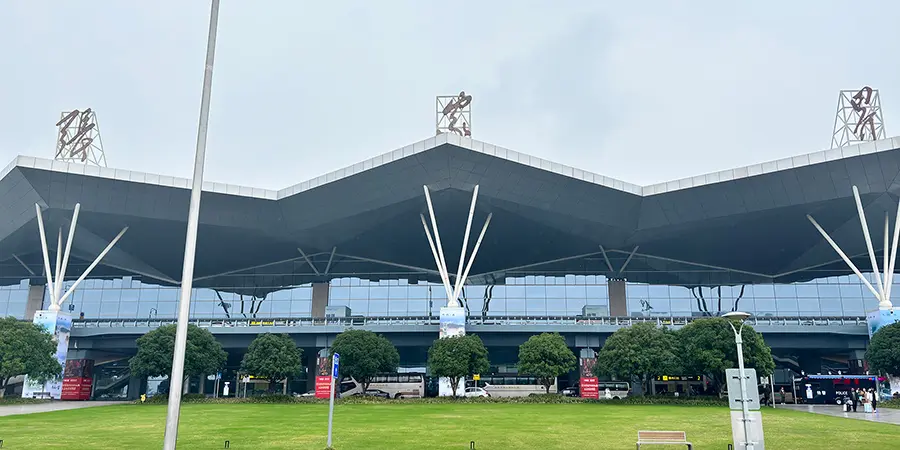 |
| Zhangjiajie Airport |
Within Zhangjiajie itself, the public transport is very well developed. Long-distance buses run between Zhangjiajie’s most attractions and downtown every day. City buses and taxis, including online hailing taxis are easily available.
See More about Zhangjiajie Transportation:
Located in subtropical monsoon climate zone, Zhangjiajie has a 4 distinctive seasons: spring has mild temperature and occasional rainfall; summer is hot but the mountainous scenic areas are relatively cooler, and rainfall is more frequent than in other seasons; autumn is not too hot or too cold overall but a little dry; winter is chilly, especially on mountains, and snowfall and frost sometimes happen. In general, the comfortable March-April and October-November are the best time to visit Zhangjiajie.
Further Reading
10 Best Places to Visit in China for Return Visitors10 Most Beautiful Cities in China10 Places to Visit in China for a Trip of a Lifetime
- Last updated on Nov. 05, 2025 by Brenda Lian -








